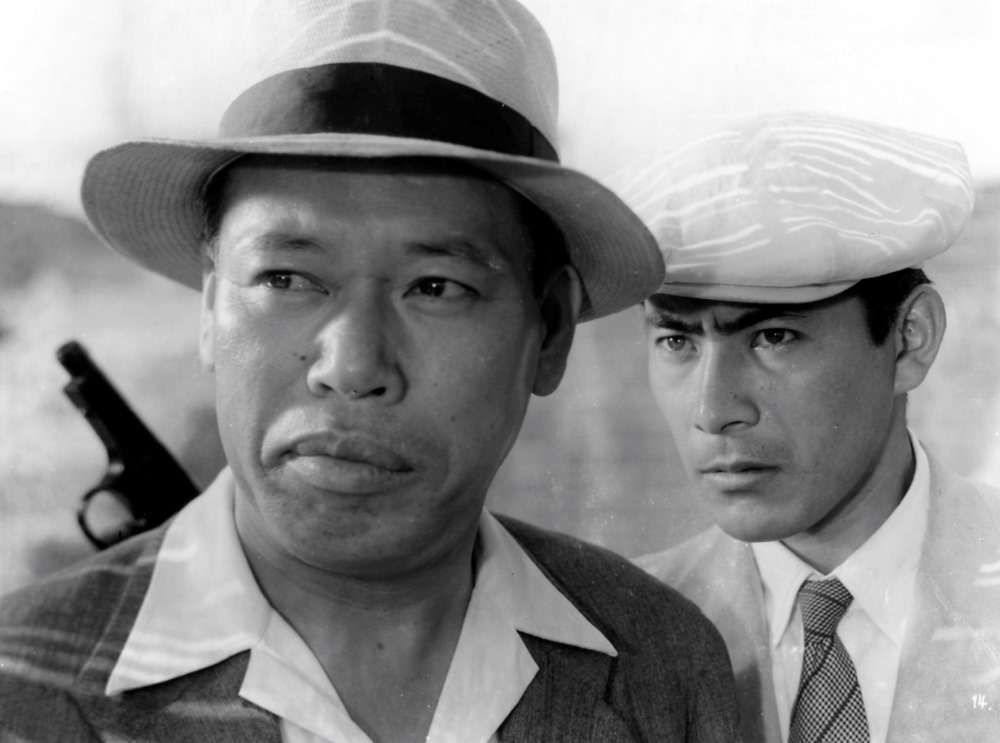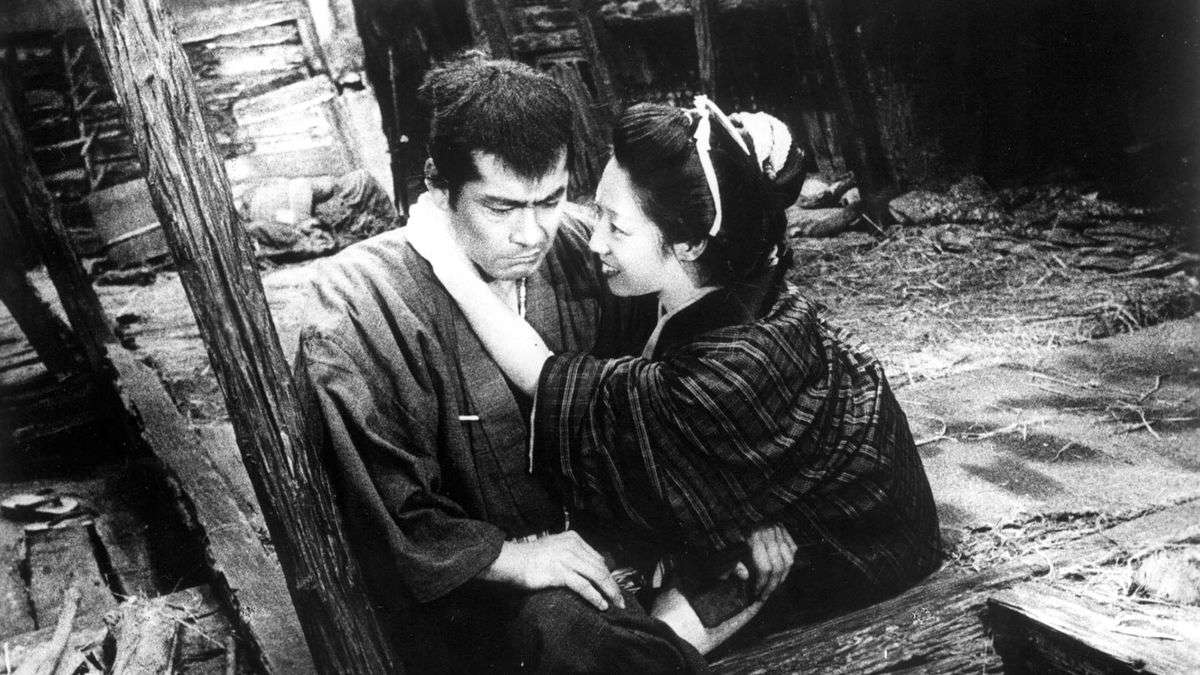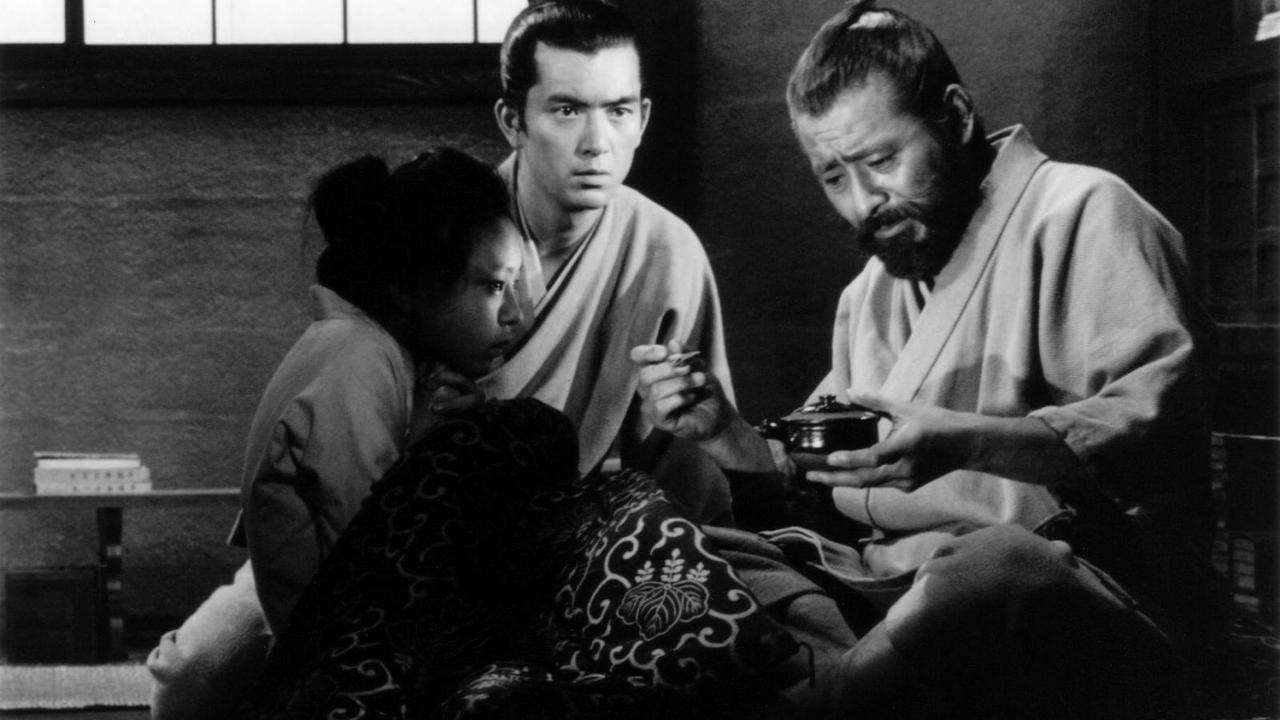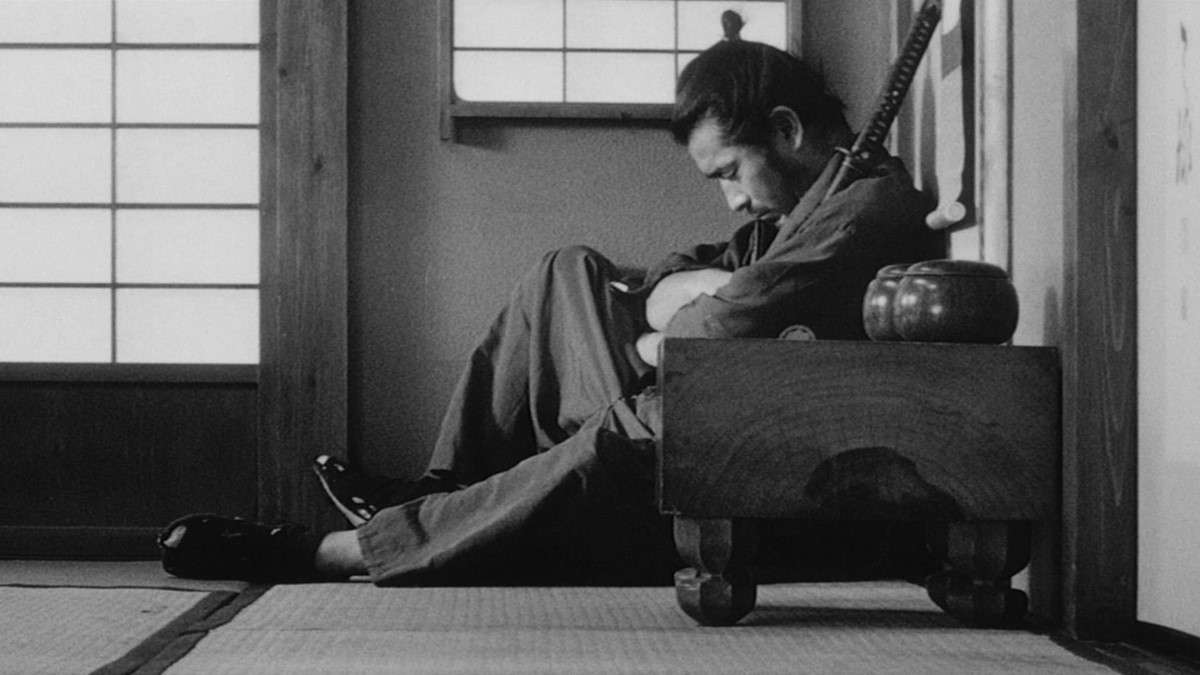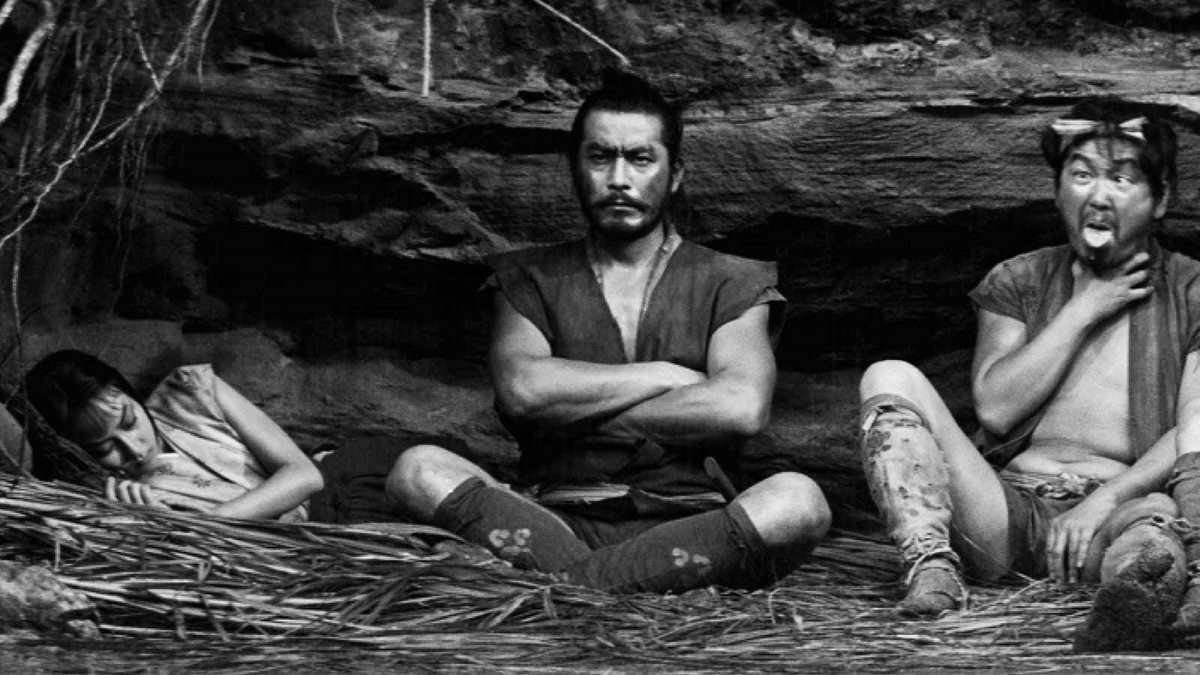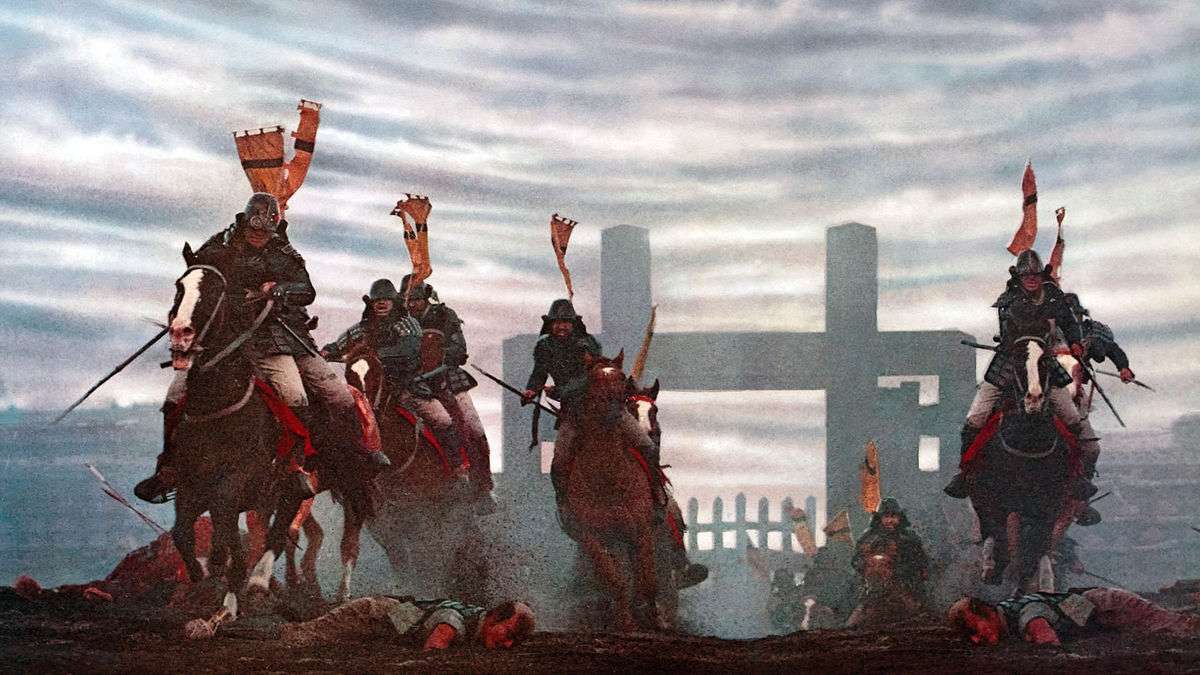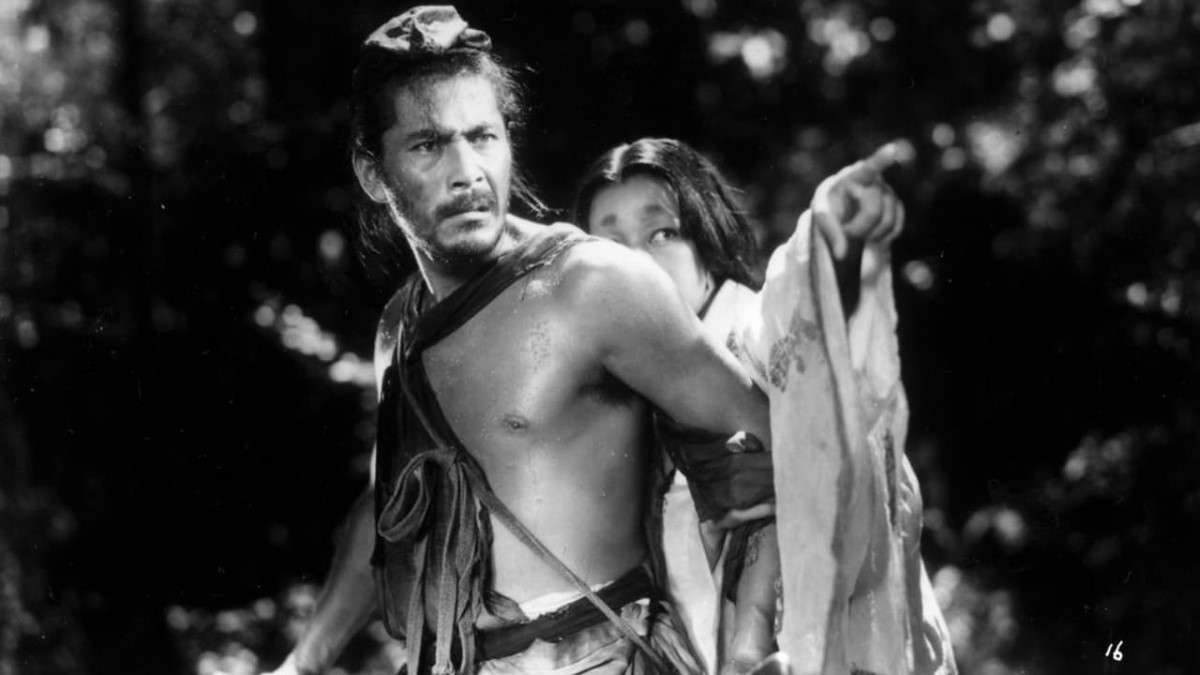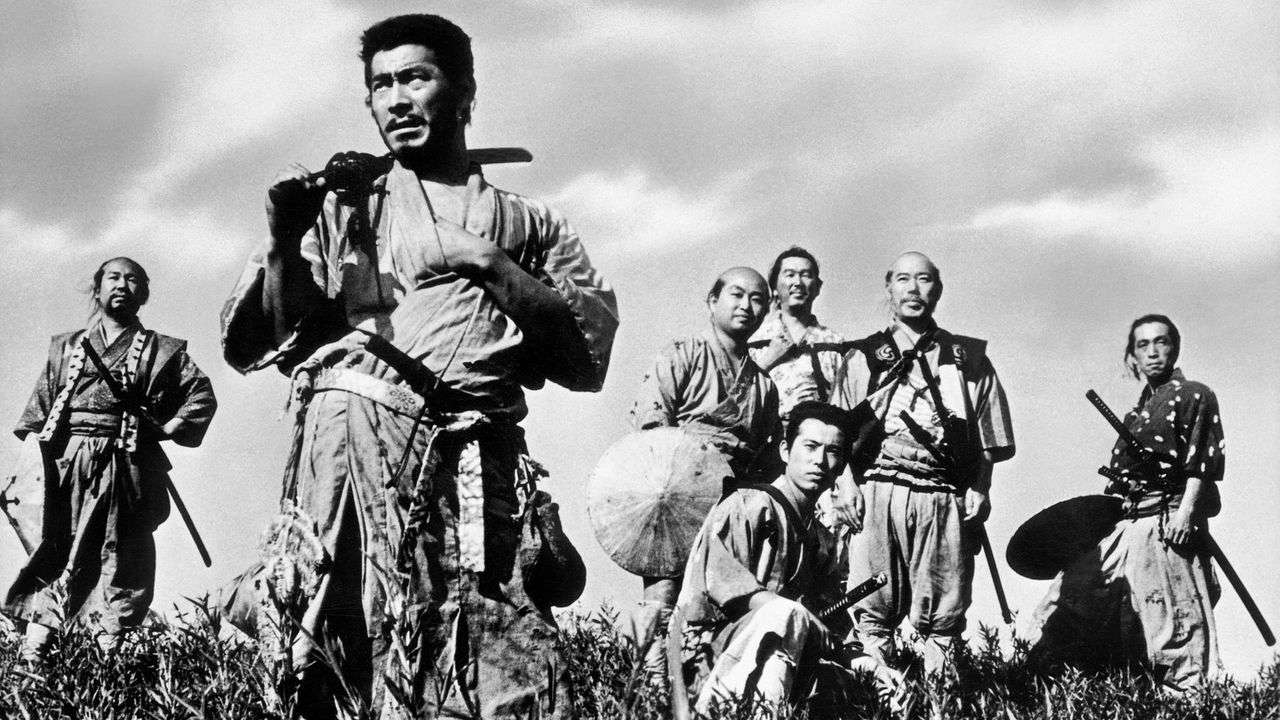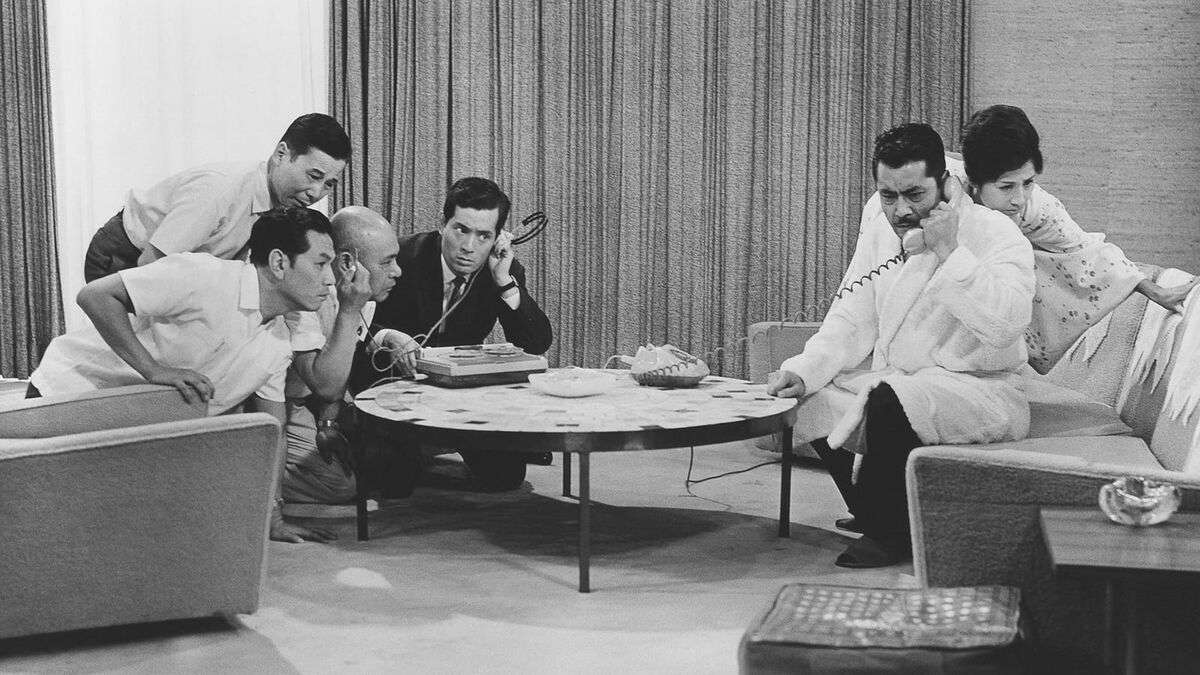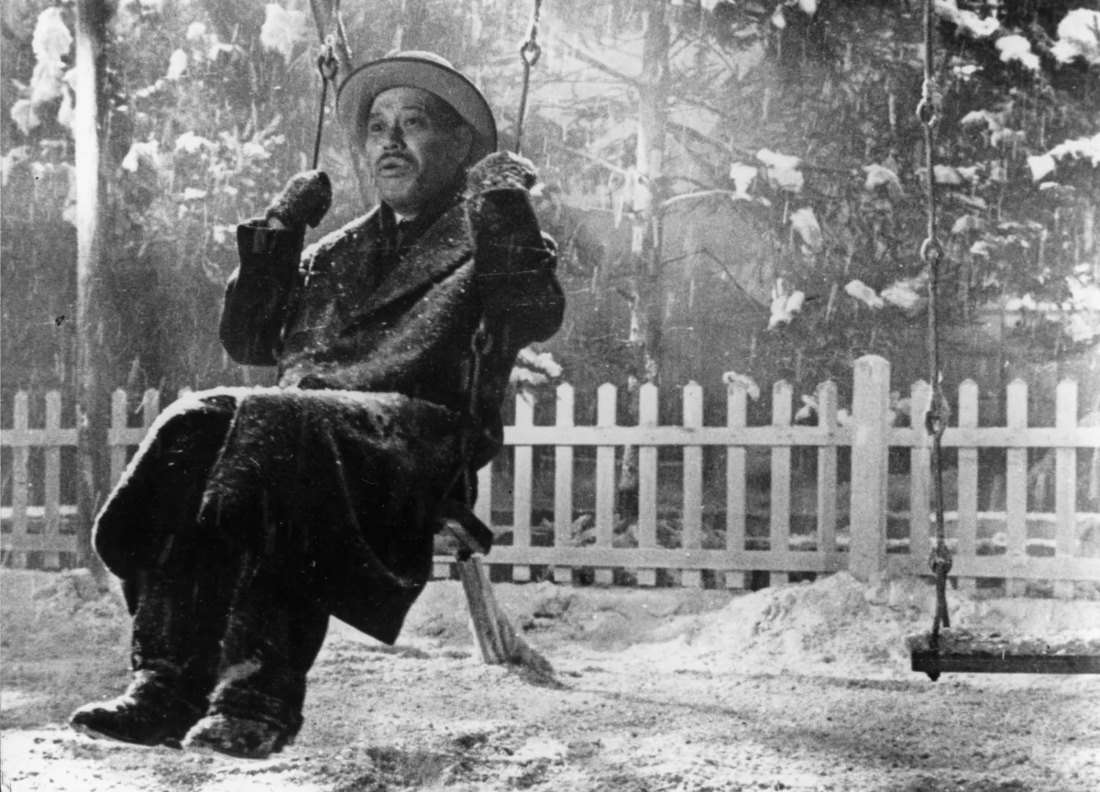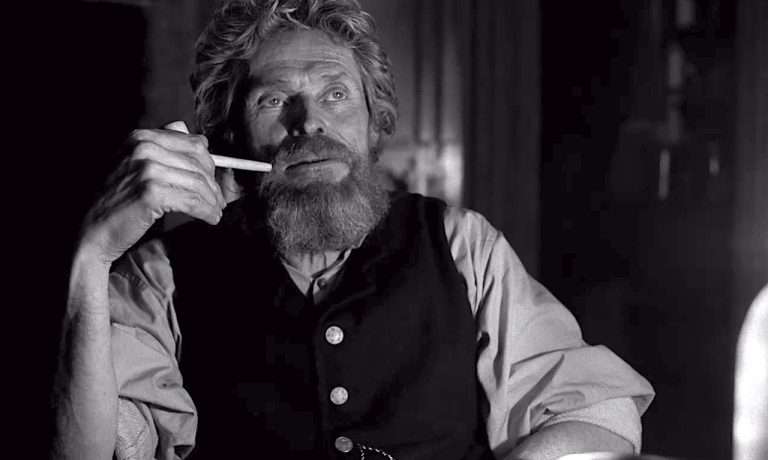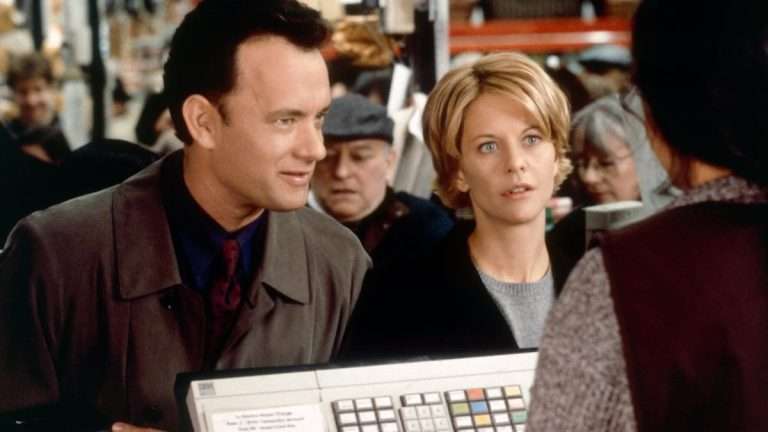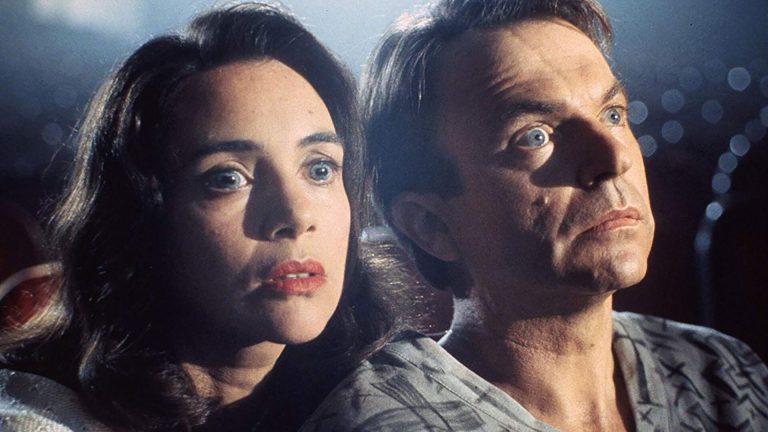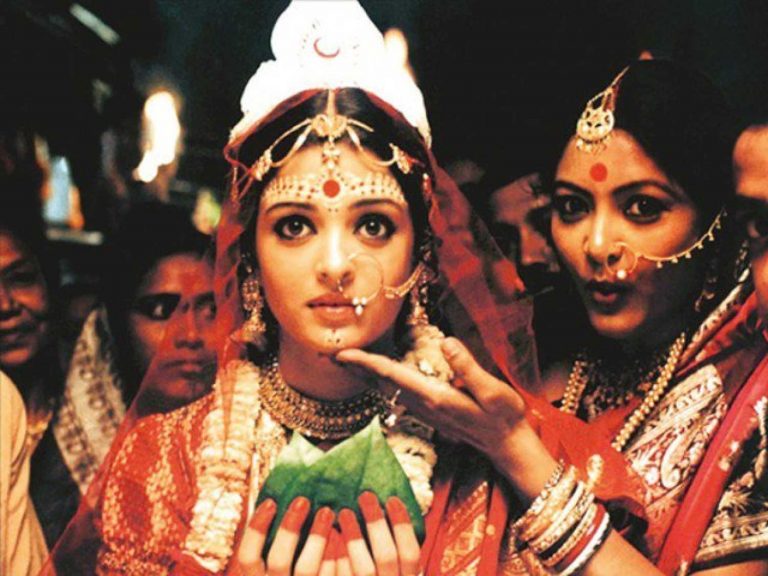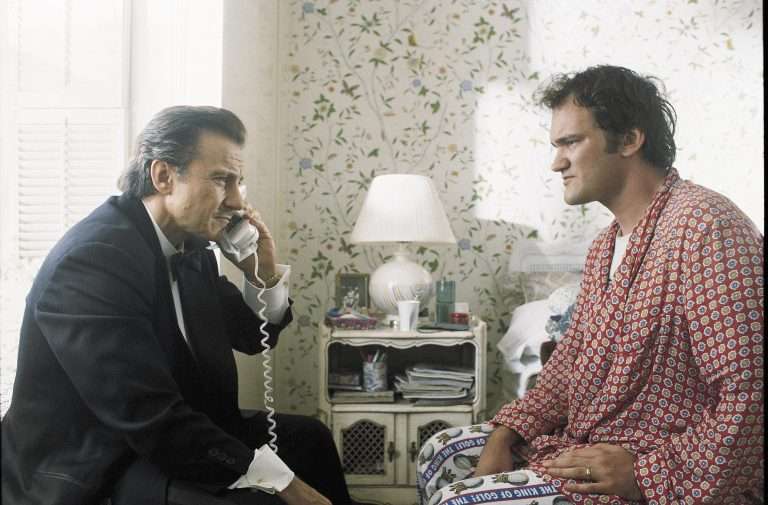This past April (better late than never) saw the 70th anniversary of one of the great film classics from one of cinema’s most essential artists. Seven Samurai has long been held as one of the most important, influential pieces of filmmaking of the 20th century, and by that token, its architect, Akira Kurosawa, has maintained his grip as one of the most celebrated directors to have ever lived. Occupying a unique space as a noted export of Japanese cinema who took strong influence from his counterparts in the West, much debate has been held, from the time of his peak to long after his death, as to whether or not Kurosawa can truly be considered an emblematically “Japanese” filmmaker.
There is, however, no denying that in his catalog, Kurosawa has dedicated much time and care to exploring the mindsets of the Japanese population across a tumultuous historical period—you’d be hard-pressed to find a Japanese director of this era who didn’t tackle ideas of national identity and postwar nuclear paranoia following World War II. Across 50 years and 30 films, Kurosawa peeled back Japan’s hardened shell to reveal a beating heart touched by a sense of real humanism, and the wide range of genres and periods he’d take on in these films only proved a further testament to his enduring legend. From samurai legends to the most personal of character studies and everything in between, here are the Top 10 Akira Kurosawa movies:
Special mentions:
Since Kurosawa’s oeuvre is chock-full of gems, special mention should be given to those that didn’t quite make the cut. Namely, Throne of Blood (1957), the director’s first and perhaps most brutal brush with the works of William Shakespeare; Kagemusha (1980), his Palme d’Or-winning odyssey of color and costuming that would be perfected in another film high on this list; and Dreams (1990), Kurosawa’s achingly personal anthology film of big ideas, disparate visuals, and Martin Scorsese playing Vincent van Gogh… need I say more?
10. Stray Dog (1949)
Two years and three films into their collaboration, Akira Kurosawa and actors Toshirō Mifune and Takashi Shimura had already established the essence of their enduring collective spirit with the noir-infused thriller Stray Dog. Following a young detective (Mifune) whose weapon is pickpocketed during a nationwide heatwave, Stray Dog recounts the most baseline of buddy-cop narratives before those were even an established formula, as the rookie teams up with a seasoned pro (Shimura) to track down the weapon and its thief before anyone can be harmed at the hand of the former’s negligence. (See also a pretty decent episode of Star Wars: The Clone Wars paying direct homage to the film; George Lucas’s Kurosawa influence is something that has echoed throughout his career, as will be discussed soon.)
As with many of Akira Kurosawa’s movies, Stray Dog is captivating because of its focus on character, exemplified in a dynamic that fully uses his frequent collaborators’ unique chemistry. Simmering with tension and a resonating story of personal responsibility, guilt, and the drive to make things right, Stray Dog is a testament to Kurosawa’s firm grasp of genre conventions (before they even became conventions) to help relay the overarching mood of a country reeling from the aftereffects of a generational conflict.
9. The Lower Depths (1957)
Easily one of the most dour Akira Kurosawa movies, The Lower Depths finds the filmmaker exploring thematic territory rather uncommon for a filmmaker so often associated with populist entertainment, recounting a series of meandering intersections in the lives of lowly occupants in a run-down, Edo-era tenement. Through this framework, the film explores some of Kurosawa’s most questionable and least likable characters, among them a thief (played by—who else—Mifune), a gambler (Kōji Mitsui), a pilgrim (Bozuken Hidari) and, perhaps most detestable of all, the scheming landlady running the place (Isuzu Yamada).
Almost playing out like a stage play, the titular lower depths are claustrophobic and textured, giving Kurosawa ample room to unpack the inherent defeatism of those living in this decrepit space, once more making masterful use of the director’s singular grasp of blocking. Though some would say this framework results in some uncharacteristically classist pessimism towards people experiencing poverty, The Lower Depths is nonetheless a compelling exploration of how the existential drive of the human spirit—and Buddhism in particular—often leads to the dark corners of nihilism in a world so burdened by moral and physical decrepitude. They would probably choose differently if given a chance…
Related to Akira Kurosawa Movies: 30 Movies Featuring Characters Trying To Escape The Vicious Cycle Of Poverty
8. Red Beard (1965)
The final collaboration between Kurosawa and Mifune—and the one that would leave a rift between them—Red Beard provides perhaps a more caring outlook on humanity than The Lower Depths, expanding upon the ideas of existentialism and human decency across a sprawling three-hour runtime in which a young doctor fresh out of medical school (Yūzō Kayama) is sent to a remote village under the tutelage of the town’s no-nonsense physician (Mifune). You’d expect a premise like that to take on a typical “grass is greener” approach, in which the amateur learns of the virtues of rural life and the loosening up of an uptight upstart with big urban dreams… but not quite.
In Red Beard, Kurosawa isn’t shy to plunge his young lead—and, by extension, the viewer—head-first into the more morose ponds of the medical field, ultimately exploring the director’s favored themes with a particular emphasis on suffering and the possibility of alleviating it in any way one can, even if only temporarily. Surprisingly mobile in its pacing, Red Beard gives both Kurosawa and Mifune the space to breathe, letting this complex world come to life with as much vibrancy as the actor’s luscious titular facial hair.
7. Yojimbo (1961)… and Sanjuro (1962)
That’s right, we’re counting Yojimbo and Sanjuro as one film! Though not conceived as one story (Sanjuro was quickly altered to incorporate Mifune’s lead character once again after the unexpected success of Yojimbo) or tied all that stringently by continuity, there is a spiritual sameness to these stories of a lone ronin who wanders into town and becomes embroiled in the local conflicts out of a sense of duty combined with self-interest. The inspiration for Sergio Leone’s Man With No Name trilogy, there is a certain Western tinge to Kurosawa’s lone-wolf approach to these films, combining the notion of honor-bound responsibility and self-serving solitude in conjunction with some of the best swordplay action you’ll find across this entire filmmaking period.
Reusing some actors in different roles across these two films, Kurosawa nonetheless creates a certain kindred spirit between them, as though this ronin’s misadventures exist as a curse outside the continuity of time. (Yes, this is the justification I’m going with for squeezing these two films together!) Both Yojimbo and Sanjuro make excellent use of Mifune’s physical presence in terms of his intimidating poise and the contained explosiveness of his combat choreography, ensuring that this pair makes for some of the most essential (and watchable) entries in the samurai sub-genre.
6. The Hidden Fortress (1958)
The Hidden Fortress is probably best known today for its influence on none other than Star Wars (1977). For those unfamiliar, George Lucas, having seen Kurosawa’s film and being especially struck with the humorous dynamic between the two petty crooks whose perspectives guide the narrative, lifted that traveling perspective directly into the relationship between the droids R2-D2 and C-3PO, who wander through the start of his film before becoming embroiled in the central conflict.
Such is the groundwork for one of Kurosawa’s most lighthearted but nonetheless engaging pieces of jidaigeki (Japanese for “period-piece”) cinema, following two peasants (Minoru Chiaki and Kamatari Fujiwara) as they come across a mysterious general (Mifune… surprised?) and a princess (Misa Uehara), and offer to accompany them to their destination for payment, oblivious to the exact identities of their traveling companions. The core quartet of actors really shines through, in large part due to the differing dynamics they bring to the table – bumbling, stoic, or poised. Throughout the film, Kurosawa’s balance of comedy and thrills makes for one of the director’s most quietly influential pieces of filmmaking, thanks primarily to his enduring focus on characterization. It’s a film that covers all bases and leaves you wanting for absolutely nothing by the time the screen goes black.
5. Ran (1985)
The only Akira Kurosawa film to appear on this list outside what’s generally believed to be his golden period, Ran finds him earning what would be his only Oscar nomination for directing one of his most visually sumptuous and undeniably epic pieces of storytelling. A massive retelling of William Shakespeare’s “King Lear” filtered through the lens of a feudal Japanese warlord (Tatsuya Nakadai, another frequent collaborator and a fittingly fiery replacement for a role Mifune would undoubtedly have played in another world) and his plotting family, Ran utilizes the director’s incredible skill for scope and blocking to astonishing effect. Kurosawa surrounds his colorful (literal and figurative) characters in an extraordinary vision in which power and corruption manifest in the grandeur of their (self-)destruction.
A marvel of technical bravura, Ran demonstrates Kurosawa’s ability to revisit familiar material (the samurai film for which his name had become synonymous) with a new sense of scale and urgency. Also, the only color film to appear on this list, Ran luxuriates in the obvious but no-less engaging visual coding of his players to create a feast for the eyes, all to supplement a narrative acting as a feast for the rotting soul.
Related to Akira Kurosawa Movies: 30 Best Tatsuya Nakadai Movie Performances
4. Rashōmon (1950)
A film so influential that there’s literally a storytelling device named after it—in which events are given different interpretations based on contradicting character perspectives—Rashōmon has stood the test of time as one of Kurosawa’s most beloved and studied works. In terms of both story and visuals, Kurosawa’s craftsmanship is here at its most focused. The story of a court case surrounding the mysterious death of a samurai (Masayuki Mori) and the various battling testimonies about what actually occurred, Rashōmon stands out as the first significantly popular Japanese film on the worldwide stage (it won the Venice Film Festival’s Golden Lion), primarily thanks to Kurosawa’s strong interest in those characters whose perspectives drive the story.
It is here where subjectivity becomes a crucial piece of the puzzle, as every version of the tale sheds new light on the previous one, all the while providing a stimulating, complex rumination on honor and morality. If there isn’t all that much to say about Rashōmon, that’s less a factor of the film’s shortcomings and more an acknowledgment that this is a film that has been studied in and outside the classroom for more than half a century, with every new reading, the appreciation for Kurosawa’s craft only intensifies.
3. Seven Samurai (1954)
Here it is: the movie of the hour! Indisputably, Kurosawa’s most famous and celebrated film, Seven Samurai, draws on the director’s fascination for Western storytelling in his riveting tale of seven isolated samurai hired by a small village to defend them from a group of bandits who continuously terrorize them. This Western influence of the righteous defenders of the weak came full circle when Seven Samurai was adapted into the Hollywood classic The Magnificent Seven (1960), showing just how influential Kurosawa had been in the adaptation of his own influences.
Across nearly three-and-a-half hours, the film dives into these themes we’ve discussed above ad nauseam but does so with a fresh sense of vigor and diversity in the voices through which Kurosawa channels these themes. Every now and then, it’s healing for the soul to sit through an expansive tale that feels as though a lifetime has flashed right before your eyes. Seven Samurai achieves this precise effect in spite of the fact that it takes place over such a short period. Its characters are simply that memorable. Another film whose virtues have been expressed far longer than most of us have been alive, Seven Samurai is simply a quintessential period piece epic from this moment of Japanese cinema history.
Related to Akira Kurosawa Movies: 100 Films Recommended By Japanese Master Filmmaker Akira Kurosawa
2. High and Low (1963)
After a long detour of Jidai-geki samurai films, we finally return to Kurosawa operating in the (then-)modern day—the Japanese call this the “Gendai-geki” film—with the most thrilling story he’d ever lay his hands upon. Kingo Gondo (Mifune, at his most complexly commanding) is on the board of a successful shoe company and hopes to make a massive gamble for greater control of the company. All of this changes when his son is allegedly kidnapped and held for ransom, as further developments arise that call into question how far loyalty can go when it comes at the cost of personal interest.
Mifune’s sturdy presence anchors the film, as his moral dilemma gives shades of ambiguity to a man enraptured in a narrative that could otherwise rely on the gripping crime at its center. A police procedural of the highest caliber, High and Low deals with class discussions befitting its on-the-nose title with razor-sharp technique from its director (the blocking… Sweet Jesus!), proving definitively that Kurosawa was a peerless artist capable of sucking you into any morally murky narrative. As of right now, Spike Lee is currently filming his English-language remake with Denzel Washington; the man is playing with fire while doused in jet fuel…
1. Ikiru (1952)
Sometimes, you just need a simple story with a ton of heart to cement a film as an all-time great. With Ikiru, Akira Kurosawa manages precisely that, looking once again toward the notions of existentialism and purpose with possibly his most sentimental eye. It’s an approach that risks becoming heavily maudlin, but the director’s deft sincerity and Takashi Shimura’s delicate lead performance are more than enough to carry the film into legendary status. Playing a businessman forced to reevaluate his life after a sudden diagnosis of stomach cancer, Shimura reminds us why he and Kurosawa held one of the more enduring working relationships of each of their respective careers, as the director pulls from his star’s authoritative demeanor a softened touch, numbed by the realization that years of effort and diligence may very well have been for nothing.
It’s an idea that no doubt struck a chord with a filmmaker who worked for as long as Kurosawa did and faced as many challenges as he would over the course of his storied life to make those films in the first place. Though Ikiru only comes around halfway through that unparalleled filmography, its humanity acts as a testament to the balanced reflexivity of an artist constantly questioning his own value; today, over eight decades after that career began, that value is completely beyond refute.


